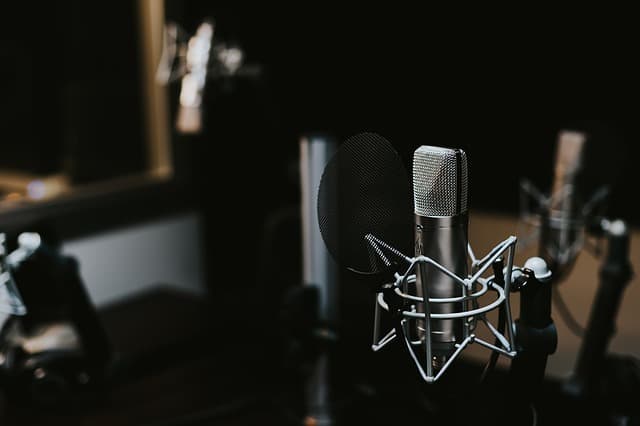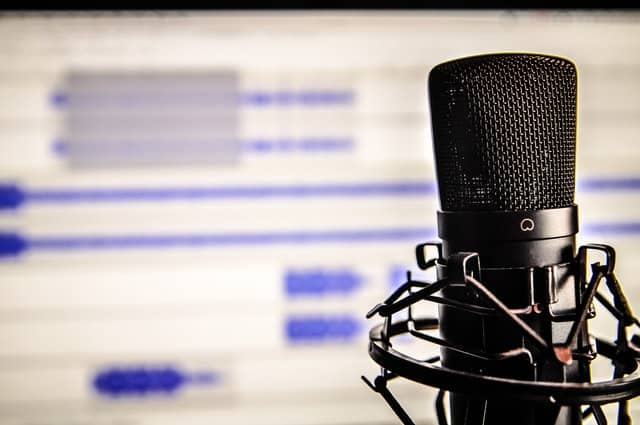Many EDM (electronic dance music) tracks have vocals in them. When producers want to add vocals to their tracks, then they have many options to get those vocals. This post explains many of those options.
How do EDM producers get vocals for their tracks? Here are some common methods by which EDM producers get vocals:
- Find vocal samples, and then we can modify them. These samples can be free, but most of the time, we have to buy them. Some common methods (which we can combine) to modify such samples are:
- Adding audio effects can change the sound of a vocal.
- Reverse a vocal sample.
- Time stretching is something we can use to slow down or speed up the vocal.
- Break the vocal up into parts, so that we can use one more parts/use the parts in a different order.
- Change the pitch of the vocal.
- Take a vocal from another track, which is almost always never allowed.
- We can record the vocal completely ourselves, or we can hire a vocalist. The recording with a hired vocalist can be in person or not in person. A recording not in person happens almost always online.
After this introduction, this post goes more in-depth about some common methods by which EDM producers get vocals for their tracks. However, this post does not give information about taking a vocal from another track since such an action can have serious negative consequences.
Getting Vocals Without Recording Them
People can share complete vocals with other people. Such sharing can free, but the complete vocals that we can buy are most of the time are better quality vocals, at least in my experience. Moreover, free good sounding and complete vocals (which we may use legally) can be hard to find.
We can use the term sample for an audio file. Therefore, a vocal sample is a recorded vocal to an audio file. The term vocal sample is pretty common.
Some popular places where we can get paid vocal samples from are:
- The online music store Beatport. This store is well-known for people who want to buy music and sample packs.
- The online store for music composers Loopmasters. This store is well-known for people who want to buy sample packs.
- Splice is a platform that is more than a store. Splice is a cloud-based music creation and collaboration platform. We can get sample packs with this platform with a subscription-based plan.
Using Vocal Samples
Many people make samples of vocals when they want to easy reuse vocals. However, as mentioned in the previous section, the creators of samples can share their samples with others.
Sharing vocal samples can be a solution for people who lack the skill/knowledge to create vocals themselves or don’t want to create them. Furthermore, there are several things to keep in mind when choosing to use a vocal sample:
- Loss of credibility is common (not always) when people use vocal samples of other people, instead of their own. Such sample use can be a sign of novice behavior and of someone who lacks skill.
- Many people will alter vocal samples to make them their own. Such altering will allow for a unique sound, and it can show creativity and passion for our music.

Changing a Vocal Sample Sound to Our Sound
There are several methods we can alter a vocal sample to our own:
- Adding audio effects can change the sound of a vocal sample. Such effects can change the sound subtle, but can they also change the sound way more so that the original sound becomes unrecognizable. An example is adding a distortion effect to the vocal sound.
- Reverse a vocal sample, which changes the whole vocal and can make the words of the vocal unrecognizable.
- Time stretching is something we can use to slow down or speed up the vocal sample. As an example, by time-stretching subtle, we can match the vocal to the tempo of our song. However, by time-stretching more extreme, we can make the vocal unrecognizable.
- Break the vocal sample up into parts, so that we can use one more parts/use the parts in a different order. Most of the time (not always), the smaller such parts are, the harder to recognize the original vocal. For example, we can use the sounds of words, letters, or even sounds smaller than letters.
- Change the pitch of the vocal sample. As an example, we can change the pitch of a vocal subtle to match the key of a song. However, we can pitch the vocal more extreme so that it can become unrecognizable.
Combining the Vocal Sample Alteration Methods
By combining those methods to change a vocal sample, we can become more creative and change the vocal sound even more to our own. Also, with such combining, when we make many subtle changes with those mentioned methods, it results in a not subtle combined change.
A common technique that results from combining a few of the mentioned methods is layering. With layering, we can layer multiple versions of the vocal on top of each other, and maybe in combination with different timings (start moment of a vocal version). Such versions can be different in pitch, size (with breaking a vocal up), but is not limited to that.
Three General Parts of Recording a Vocal
Generally, great recordings come in three parts, which are preparation, recording techniques, and recording attempts:
- We should make sure that we have a good as possible: place (such as a room), recording equipment, a schedule (not too small), and some recording tests. Also, the vocalist should be able to make vocals (such as not being too sick), and we should account for any unwanted noises that could ruin a recording. Keeping most unwanted noises away from the recording is a good goal, but a complete soundproof place is most of the time not necessary.
- Recording techniques can vary from person to person, but here are two basics. The first basic is placing the microphone and vocalist in a comfortable/right distance and height from each other. The second basic is a motivating communication between the recorder and the vocalist (if not the same person) to get the best results.
- A great recording is a goal, but it may not happen right away. Most of the time, when there is a positive vibe/comfort, and the vocalist understand what we want, then a great recording can come after some practice. However, the experience and skills of vocalist play also a role in getting a great recording.
Hiring a Vocalist
Hiring a vocalist could be asking someone you know to help you out or find someone at an online place, such as AirGigs. In most of such online places, we can hear what vocalists have to offer before we reach out to them, which could save much time.
The process of hiring them can be asking them to record a vocal for a determined price, and then pay that price after the recording. However, we can also choose to add an audition process/requirement to sign a contract to this process. Most of the time, the hiring process depends a lot on the necessary investment of time and hiring costs.
When we hire a vocalist, then the recording with the vocalist can be in person (not completely online), or it can be not in person (completely online). Furthermore, recording in person can result in the same great recording as a recording completely done online.
A combination of recording a vocal in person and online is also possible. An example can be that a planned in-person recording session is over, but that not all the vocals are 100% finished. The not finished vocals will then get finished online.
There is probably as always some communication with a vocalist, such as chatting or video calling, when online. Moreover, the more communication we have with the vocalist, the better the results, at least most of the time. With such communication, the vocalist knows then better what we want from him/her.

Recording a Vocal in Person (Not Completely Online)
Recording a vocal in person is the “traditional” approach. Furthermore, there can be at least two reasons why recording in person is preferred over a recording online, which are:
- Recording a vocal in person can be more personal than online. When the recorder and vocalist like this more personal approach, then this can have a positive influence on both. This positive influence can result in more motivation for getting a great recording.
- Some things can be too hard to set up correctly for the recorder or vocalist, such as not having a good recording place. Also, some things require extra work to set it up for online use, such as that the recorder and vocalist can use different software for the same tasks. We can solve both those problems by sitting in the same place and using the same tools.
Recording a Vocal Not in Person (Completely Online)
In theory, recording a vocal completely online can look a lot like recording in person since there are tools that make that possible. Such tools are webcams/screen sharing. However, that theory is not that common.
Recording a vocal completely online can have some benefits, which are:
- The distance between the person that needs the vocal and the vocalist does not matter that much.
- The vocalist records a vocal when he/she has time for it, but most of the time, within a deadline. Also, the person who wants the vocal does not have to schedule some time for the recording. However, the receiver of the vocal maybe has to give some feedback to the vocalist, which also costs time.
Closing Words
Hopefully, you know now more about some common methods by which EDM producers get vocals for their tracks.
If you like this post, then you may want to look at some posts in the production part, since this post is also part of it.
When you know someone who likes to know how more about how producers get vocals, then feel free to share this post. Additionally, do you know a not mentioned method by which producers get vocals?

